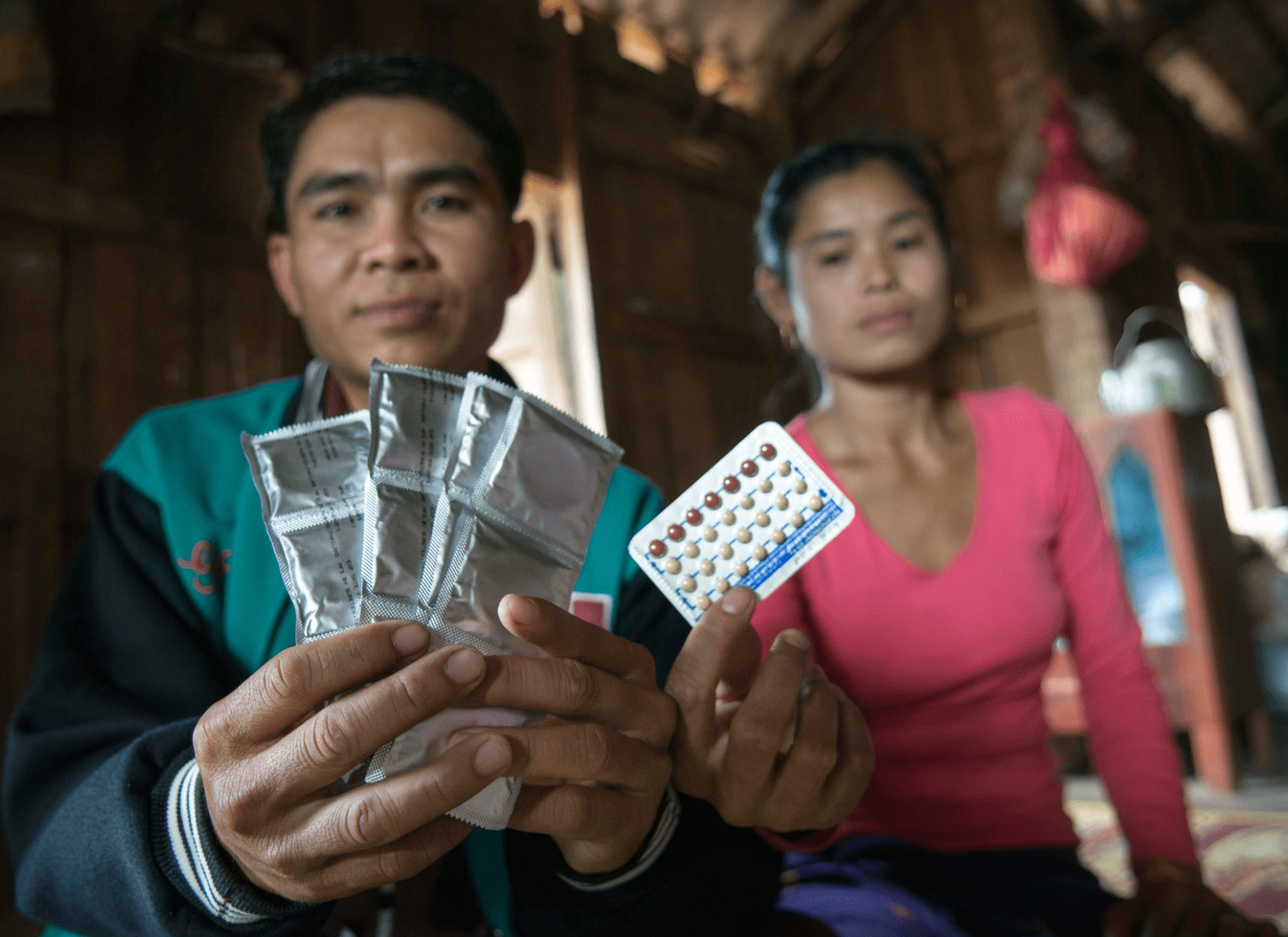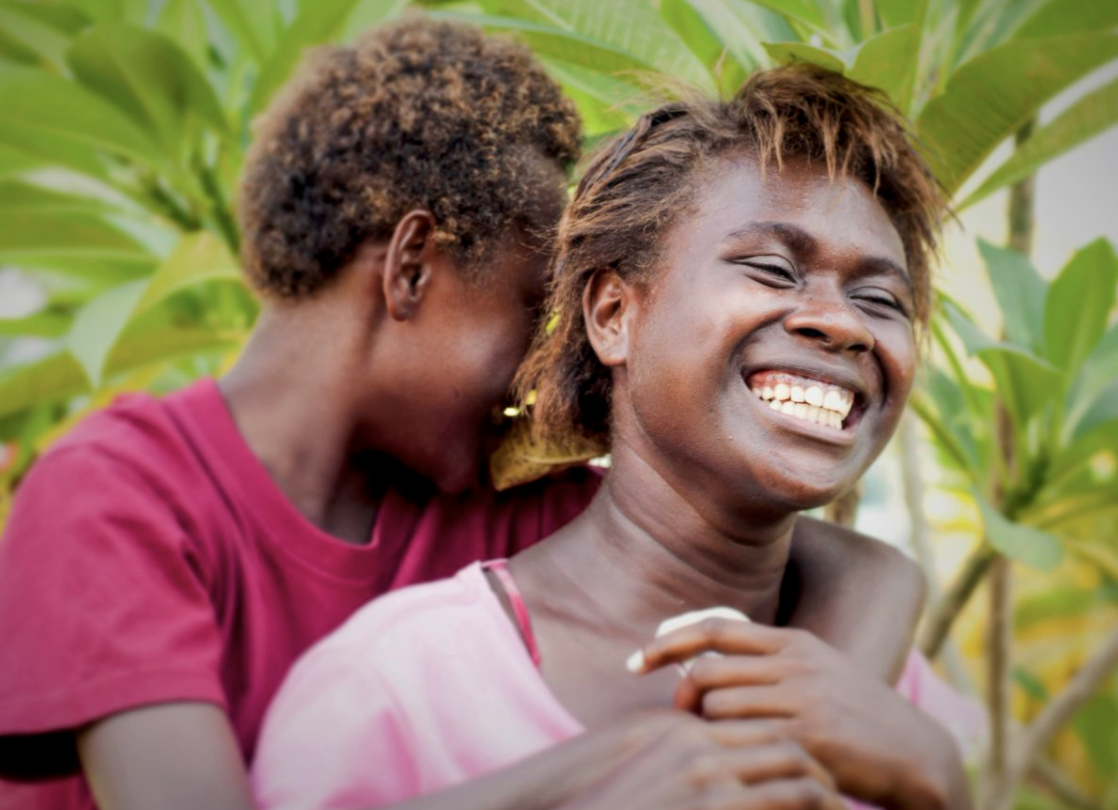Written by Yoriko Yasukawa, UNFPA's Asia-Pacific Regional Director, this article was originally published by the World Economic Forum.
Nestled in a remote forest near the border with Vietnam, the village of Labangkhok is one of the poorest in Laos. It’s often cut off from the outside world for months each year, as heavy rains turn roads into impassable mud. Yet things have been improving: solar panels have appeared around town, a sign of better infrastructure; and families are having fewer children, enabling them to better plan for the future – and, in so doing, boosting their country as well.
Agnod, in his late 50s, has provided contraceptive pills, condoms and health advice to women and men in Labangkhok and four other communities nearby. A government-trained distributor, Agnod and others like him have helped to reduce maternal and child deaths and other health risks related to unwanted pregnancy. They’ve also encouraged adequate spacing between births so women can fully recover.
From 2012 to 2015, Laos’ maternal mortality rate dropped by 42% from 357 per 100,000 live births to 206, surpassing the country’s target contained in the Millennium Development Goals.
Now, in this era of the Sustainable Development Goals, Laos is committed to reducing maternal deaths even further to 180 per 100,000 live births. It needs to reach this target if it is to graduate from its status as one of the world’s least developed countries by 2020.
Family planning, under the wider umbrella of sexual and reproductive health and reproductive rights, is truly central to this tiny country’s prosperity – a story that has been replicated around the region and the world.
Moving from chance to choice
As of 2017, 1.6 billion women of reproductive age live in developing regions. About half of them – 885 million – want to avoid a pregnancy.
Some 214 million of these women who want to avoid pregnancy find it difficult, if not impossible, to do so. In terms of pregnancy prevention, 59 million use unreliable traditional methods, reflecting a high and unmet need for modern contraception. A further 155 million use no method of contraception at all.
The largest absolute number of women with an unmet need for modern contraception – 70 million – are found in South Asia, where overall maternal mortality figures remain high. In countries where family planning services have been expanded, fewer women die during childbirth. The expansion of family planning also clearly contributes to a reduction in poverty. With fewer children, families can invest more in health and education, which in turn makes future workers more productive and more able to earn higher incomes.
Family planning also protects women’s health, bringing down spending in medical care, for both families and societies. In fact, no country in the past 50 years has emerged from poverty without expanding access to contraceptives.
By allowing and enabling women to choose whether and how many children to have, family planning gives women power. The right and ability to control fertility is a cornerstone for gender equality - without it realizing other rights is not possible. With it, girls can stay in school instead of dropping out and women are better trained to secure decent employment. As the 2016 Global Gender Gap Report demonstrates, as gender parity is strengthened in a country, its economic prospects are strengthened as well.
A domino effect
Even as we celebrate the positive effects of family planning, daunting challenges remain and can lead to a domino effect.
Forty-three percent of the estimated 206 million pregnancies in developing nations are unintended – they happen too soon or are not wanted at all.
Then, of the 127 million women who give birth each year in developing regions, far too many don’t receive essential maternal and newborn care. Fewer than two out of three get the minimum four antenatal care visits and barely three-quarters give birth in a health facility.
This year, an estimated 308,000 women in developing countries will die from pregnancy or childbirth-related causes, with about 85,000 of these deaths in the Asia-Pacific region. A further 2.7 million infants will die in the first month of life – 1.3 million of them in our region.
Dollars and sense
If all unmet needs for modern contraception were met in developing regions, we would see a 75% drop in unintended pregnancies, unplanned births and induced abortions.
If we were to provide modern contraception to all women who want to avoid pregnancy and full maternal and newborn care to all pregnancies, we would see maternal deaths fall dramatically, from the currently estimated 308,000 to 84,000 per year globally. Newborn deaths would plunge from 2.7 million to 541,000 per year.
The estimated current annual cost of modern contraceptive services in developing regions, for the more than 670 million women currently using modern methods, is $5.5 billion. That’s actually less than one dollar per person, per year – 88 cents to be exact.
Expanding and strengthening services to meet all women’s needs for contraception in developing regions would double the current cost to $11 billion a year, which equates to $1.75 per person.
If we went further and fully meet the needs for both modern contraception and maternal and newborn care, it would cost $52.5 billion annually — $8.39 per person — in developing regions. Investing in both these services together would ultimately result in a net saving of $7.1 billion, given the cost efficiency, compared with investing in maternal and newborn health care alone.
If those figures seem high, remember that the world spent $1.69 trillion, or 150 times as much, on its countries’ militaries in 2016.
We’ve long known that the cost of preventing an unintended pregnancy via modern contraception is far lower than the cost of providing care for such a pregnancy. The latest studies show that for each additional dollar spent on contraceptive services above the current level, the cost of pregnancy-related care would drop by $2.30.
We need to share all of these facts and figures on how much family planning can benefit societies at relatively little cost as widely as possible, to make sure they are taken into account in national debates about budgets.
National governments – including parliaments -- have the primary responsibility for ensuring the right to maternal and child health and family planning services for all of their citizens. But donor countries and international organizations also have the obligation to give priority to these services in allocating resources for development cooperation.
Empowering people, developing nations
The latest estimates suggest that by 2020 the shortfall in contraceptive care alone will be $700 million, with the world's poorest women and girls in developing nations in particular facing unplanned or unwanted pregnancy.
Governments, civil society organizations, media – of developing and developed countries alike – as well as the UN and other international organizations must work hand in hand to mobilize the necessary resources and prevent this tragedy from happening.
Such a collective effort includes countering the rising tide of political and socio-cultural conservatism that seeks to restrict the rights of people, especially women, to freely decide whether, when and how many children to have.
These are women like Du, in her early 20s, in the Laos village of Labangkhok, who received a long-lasting contraceptive injection from Agnod, the commodities distributor, which removed the worry of an unwanted pregnancy and boosted her ability to give her two sons a better future.
If we are to enable Du and millions like her, and help entire nations develop in the process, we cannot fail them now – or in the generations to come.
Read more about World Population Day 2017




